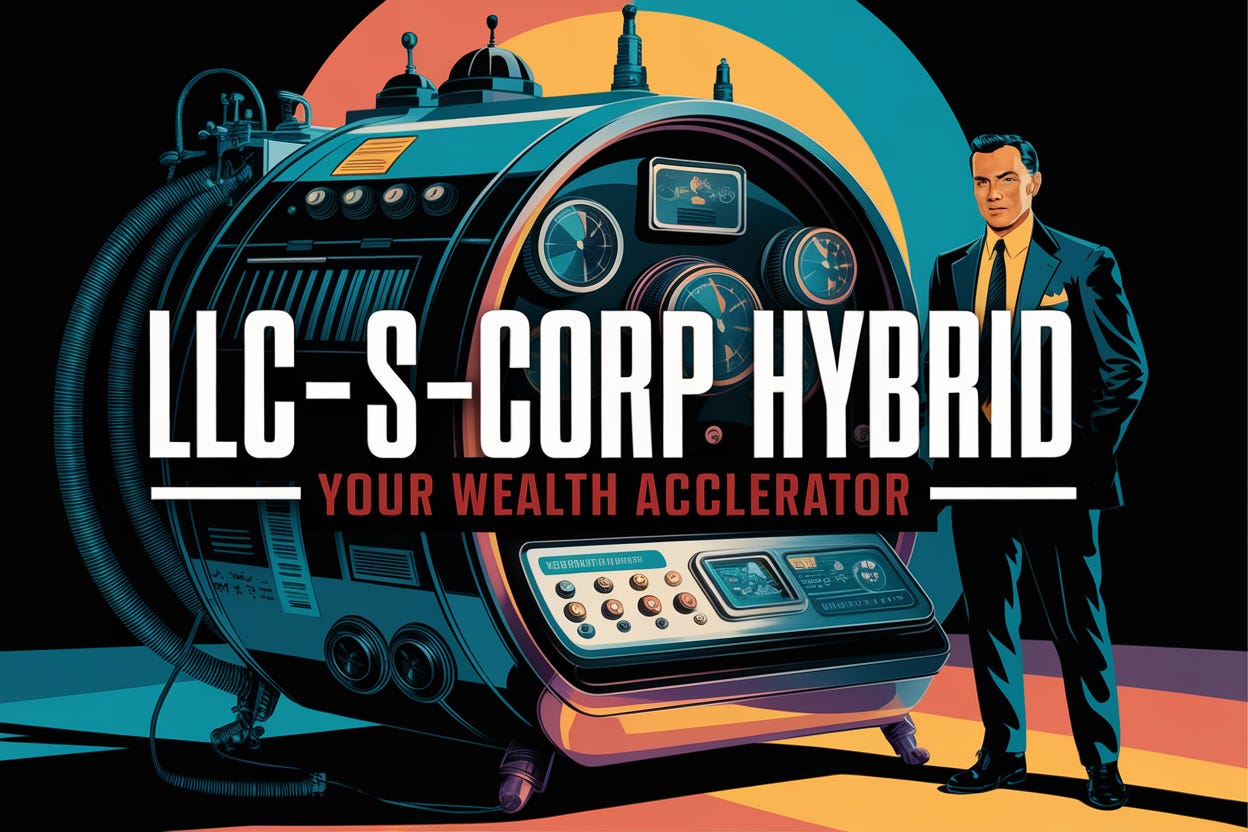Why Hybrid Entities Rule: Mastering Tax-Efficient LLC–S-Corp Structures in 2025
How Savvy Entrepreneurs Merge Flexibility and Protection to Save Five Figures on Taxes
Hello, Dear Friends!
Imagine you’re planning a cross-country road trip. You could take a rugged truck (lots of power, but burns fuel fast) or a slick electric vehicle (efficient, but limited range). Then there’s the hybrid—the best of both worlds—fuel efficiency and the freedom to go anywhere.
Your business structure works much the same way. Pure LLCs can be flexible, but you might leave money on the table. Corporations offer legitimacy but can be heavy on double taxation. Hybrid entities—LLCs taxed as S-Corps—give you the power and range to maximize profits, slash taxes, and stay legally protected.
Why This Matters. Real Money on the Line.
If you’re running a profitable venture and still operating as a sole proprietor or a single-member LLC, you might donate $50,000+ to the IRS annually. Hybrid business structures—specifically LLCs taxed as S-Corps—have surged in popularity because they deliver the perfect trifecta:
Pass-through taxation that avoids double taxation
Corporate-style protections and legitimacy
Built-in flexibility for distributing profits in the most tax-efficient manner
Over 6.1 million S-corporations filed taxes in 2024 (projected to surpass 6.5 million in 2025), a jump of nearly 30% since 2018. The writing’s on the wall: embracing a hybrid structure is no longer optional if you want to keep more of your profits.
What Is a Hybrid Entity?
A “hybrid” business structure merges the benefits of an LLC with the tax advantages of an S-corporation election. Essentially, an LLC legal shell elects S-corp status for federal tax purposes.





